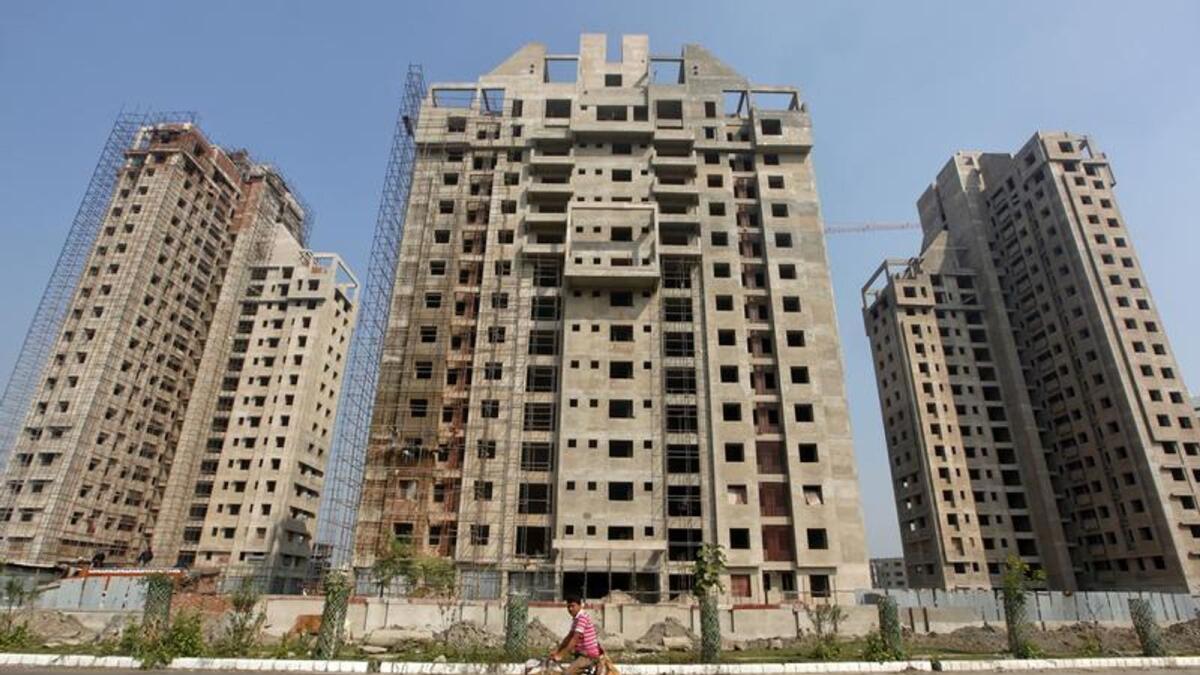
.
The long-term growth drivers for institutional investments in Indian real estate remain intact, despite the current recessionary trends, research shows.
Indian real estate has received cumulative investment inflows of about $20 billion since 2019, with highest inflows of $6.3 billion in 2019, data shows. While the pandemic resulted in a drop, investments picked up again last year, reaching $4.9 billion, Colliers data show.
The institutional flow of funds includes investments by family offices, foreign corporate groups, foreign banks, proprietary books, pension funds, private equity, real estate fund-cum-developers, foreign-funded NBFCs and sovereign wealth funds.
“If you look at the portfolio of individuals who are investing in India, real estate investment has been pretty stable,” Sankey Prasad, Chairman & Managing Director of Colliers India, said in an interview with Khaleej Times.
Commercial real estate is experiencing a bit of a slowdown at this moment. “Companies are waiting and watching for a revival, there are vacancies piling up in many cities. Large companies are going slow on future expansions,” Prasad noted.
Grade A office assets will continue to remain popular asset class among institutional investors. Investors are eyeing greenfield and ready office assets with large portfolios, with a view to bundle them up as REITs in the future, Colliers research shows.
Investments in alternative assets such as data centers and life sciences are expected to surge in next two to three years. Investments in alternatives touched a new high in 2022 at $0.9 billion, accounting for 18 per cent of the inflows during the year.
During 2023, green financing is likely to drive major investment decisions and increase investment opportunities as domestic and offshore investors seek good quality Grade A projects that are sustainable and ESG compliant

In 2022, office sector attracted highest investments of about $2 billion, garnering the highest share in total investments at 41 per cent. Inflows into the office sector rose 50 per cent year-on-year, led by some large deals. Alternatives garnered second highest share in total investments during 2022 at 18 per cent, followed by residential and retail assets at 13 per cent and 10 per cent share respectively, according to Colliers data.
There is always going to be huge appetite for residential real estate in the country. “India has one of the lowest-age working populations in the world – with a major group in their 20s. So, first time buyers will always be looking to buy property,” Prasad said.
Prasad feels that India is not going to be affected to the extent globally, given the current uncertainty across the planet. “Short-term, for sure there are some pressures. But I expect that things will look up from June onwards,” Prasad said.
A number of factors will contribute to this mood, Prasad feels. “Low operating, availability of lower cost manpower, low level of capital expenditure, along with political stability are critical components,” Prasad said.
He cites the example of Foxconn, the Taiwanese firm specializing in iPhone manufacturing, expanding its base in India. “Industrial real estate is on a roll right now,” Prasad said. The sector is doing very well as investors are finding India to be a very safe place. The government is giving a whole lot of subsidies and support,” Prasad said.
